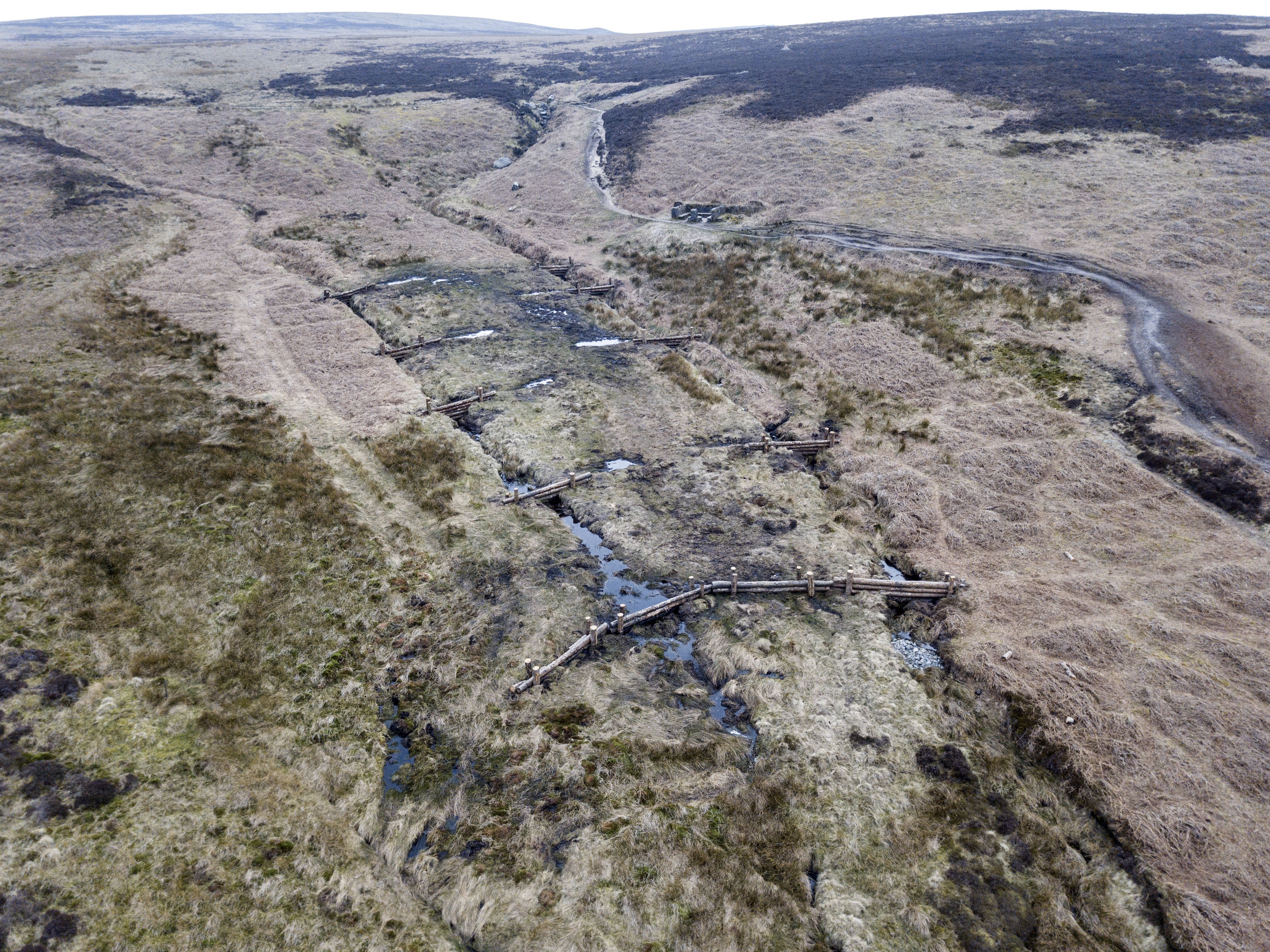Picture a boggy moor, saturated with peat, where the soil is so rich in plant material that it serves as a colossal reservoir for climate-altering gases. These peatlands are the UK’s largest terrestrial carbon store, housing more carbon than all the forests in the UK, France, and Germany combined.
However, over decades of intensive land management, many upland peatlands have suffered damage, causing them to shift from carbon stores to carbon emitters. Each year, millions of tonnes of climate-altering gases are released into the atmosphere from these deteriorated landscapes.
The importance of peatlands in mitigating climate change is now widely recognised, and an increasing number of landowners are championing peatland restoration. This restoration process involves various critical steps, such as blocking up gullies, revegetating exposed areas, and putting an end to harmful practices, ultimately returning these crucial habitats to their healthy, wetter state.

In the pursuit of upland restoration, a parallel approach involves establishing diverse woodlands on moorland slopes and in cloughs. This often includes sensitive planting of native trees, such as rowan, oak, and birch, to kickstart woodland rejuvenation. Alternatively, some landowners opt for natural regeneration, allowing trees to self-seed and create vibrant, natural woodlands.
Both peatland and woodland restoration techniques contribute to a richer, more diverse approach to habitat management. By adopting these practices, we are not only safeguarding and enhancing these landscapes but also bolstering our efforts to combat climate change.